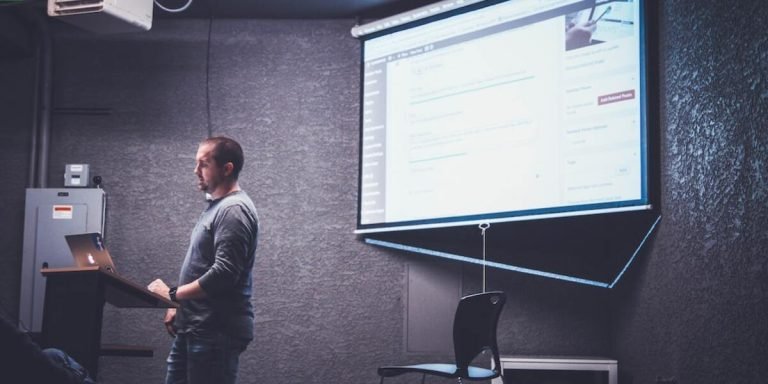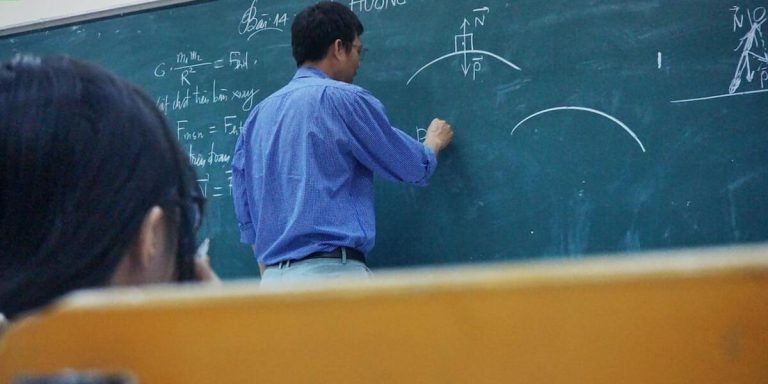Parent Teacher Communication: Building a Stronger Foundation for Student Success
The role of parent-teacher communication in a child’s academic success cannot be overstated. It forms the backbone of student development, bridging gaps between home and school environments while ensuring students are getting all the support they need to flourish acadically.
In an era where children’s education is receiving maximum focus and resources, open lines of interaction amongst educators and parents act as a catalyst for learning enrichment. Nonetheless achieving effective parent teacher communication can sometimes pose complexities requiring strategic planning and thoughtful consideration on both ends.
Did you know?
Students perform better academically when their parents communicate regularly with teachers, creating a positive triad of influence in the child’s education.
Enhancing Parent-Teacher Communication: Strategies for Success
As technology evolves and integrates into every aspect of our lives, it’s bringing drastic changes in the field of education as well. One crucial area where we see its profound impact is on parent-teacher communication patterns. Now more than ever, continuous interaction between parents and teachers plays a pivotal role in shaping children’s educational journey.
With digital tools at their disposal, educators can now effortlessly keep parents informed about their child’s academic progress and hurdles faced in real-time. Gone are the days when feedback was limited to yearly or bi-yearly meetings; today there are virtual classrooms which hold open channels for ongoing dialogue between home and school environments.
Online portals provide secure platforms that offer insightful snapshots of students’ daily learning activities and assignments leading to clear lines of expectations from both sides – teachers set realistic goals while parents understand how best to support these objectives at home. Implementing such strategies not only bridges gaps but also facilitates an environment conducive for enriched learning experiences aligning with 2023 advances in childhood education trends.
Implementing Effective Communication Channels Between Home and School
The advent of technology has transformed every aspect of our lives, including education. Enhancing “parent-teacher communication” is a crucial part that cannot be overlooked and can contribute massively to the child’s overall development.
In the context of today’s digital age, implementing effective channels for communication between home and school involves more than just phone calls or traditional meetings. A variety of innovative tools now exist which make this process easier, efficient and more engaging.
One such example is email; it delivers instant information sharing capabilities in an accessible manner for both parents and teachers alike. It also provides space for clear expression without any interruptions giving each party ample time to comprehend before responding adequately.
Moreover, integrating School Information Management Systems (SIMS) into your strategy could further streamline interactions by providing real-time updates about students’ attendance records, academic progress reports amongst other details all at one place conveniently available online 24/7.
Utilizing social media platforms like Facebook groups specifically meant for classroom activities updates are another popular choice nowadays as parents generally tend to spend considerable amounts on these sites regularly already – thereby increasing engagement opportunity along with convenience factors being tackled simultaneously too!
Establishing Regular Check-Ins and Progress Reports
Establishing regular check-ins and progress reports is imperative in enhancing parent-teacher communication. Using the current technological advancements, this process has become accessible and time-efficient.
Progress reports are a more formal way of communicating with parents about their child’s performance at school. They provide measurable statistics on grades, attendance, behavior issues etc., which help in planning future educational strategies for improvement. Online platforms make it possible to send these reports digitally – cutting down on paper waste and speeding up delivery times.
Regular check-ins supplement progress report insights by providing real-time updates about any changes or improvements in students’ statuses. Falling behind academically? An early intervention can be arranged through swift digital correspondence between teacher and parent without waiting for scheduled PTAs.
Online learning management systems (LMS) facilitate effective means of continuous engagement through assignments uploads, online tests scores alerts among other features allowing multi-channel communications thus strengthening the educator-parent bond.
Parents have access to software tools that track children’s activities during school hours including participation levels, completed tasks or areas where they struggle.These tech-enabled monitoring helps them stay informed thereby empowering them support their wards better education-wise.
Online chat forums such as Slack channels also play vital roles enabling 24/7 communication windows making sure no query goes unanswered from either side ensuring comprehensive interaction despite tight schedules both parties might have outside classroom environements .
Overcoming Barriers to Parental Involvement in Education
In the current era of digital dependence, overcoming barriers to parental involvement in education has taken on a new dimension. Raising children was never meant to be a solitary task done by parents at home or teachers alone at school – it’s supposed to reflect community work. However, with our increasingly busy lives and geographical boundaries that are sometimes unavoidable, parent-teacher collaboration needs more than just traditional face-to-face meetings.
Today’s technology integration into educational frameworks enables better communication between parents and educators. There are numerous online platforms available now providing all relevant information about students’ progress right at their fingertips – from academic performances, behavioral aspects, attendance records etc., making total transparency possible.
The key lies in understanding its optimal utilization for fostering this important relationship effectively without overwhelming either party involved. Parents need guidance on how best they can use these technologies meaningfully while keeping abreast with newer techniques that keep emerging constantly; so do educators who have also got an extra responsibility now – ensuring successful transmission of essential data points intellectually as well vicariously through engaging interactive sessions.
Addressing Language and Cultural Differences
Parent-teacher communication is a cornerstone of effective childhood education. However, language and cultural differences can often pose significant barriers to this necessary interaction. Here’s how we could address these challenges in 2023.
Firstly, technology integration in education offers a viable solution for overcoming the barrier posed by language differences between parents and educators. Translating apps or software let us bridge this gap efficiently. They convert teacher’s comments into multiple languages, facilitating understanding for non-native English speaking parents.
Secondly, video conferencing platforms have broken down geographical boundaries like never before—these come with integrated translator services which allow real-time multi-language translation during meetings thus putting both teachers and parents at ease regardless of their native tongue.
Navigating Scheduling Conflicts for Working Parents
One approach involves leveraging digital tools that facilitate easier schedules between educators and busy parents. Online calendar applications such as Google Calendar or Microsoft Outlook allow teachers to share their availability real-time with parents who can then book slots at their convenience.
Another solution lies within video conferencing platforms like Zoom or Teams which have become ubiquitous during the last few years. They ensure parent-teacher meetings are possible without needing physical presence – all you need is a device connected to internet.
Additionally, schools could adopt special parental engagement software where they can not only communicate important updates but also allows appointment bookings respecting everyone’s time constraints.
Communicating asynchronously (communication that occurs when participants interact in their own time) via emails or apps provides yet another way for information exchange between busy professionals juggling multiple responsibilities outside work hours.
Lastly comes social media networks; these provide additional channels fostering easy interactions benefiting both parties involved – Facebook pages for school updates & Twitter streams announcing important dates/events would be prime examples here.
However, it’s vital to note this digitized method should complement traditional face-face interaction wherever possible rather than replace them completely due its inherited value of personal touch points provided.
Technology’s Role in Strengthening the Parent-Teacher Partnership
The rapid advancement of technology has significantly changed the landscape of education in 2023. The computer and digital age have brought about increased channels for parent-teacher communication, thus allowing a more harmonious relation between home and school environments. From email exchanges to virtual meetings on Zoom or Microsoft Teams, there’s an array of options that can help facilitate discussions regarding children’s academic performance.
One profound way by which these digital tools enhance the partnership is through smart apps specially designed to bridge any disparity between parents’ understanding and teachers’ insights about their child’s learning journey. These tech platforms offer real-time updates on student progress along with features like sharing homework assignments or class announcements instantly available at parents’ fingertips.
Moreover, using online grading systems allows educators to track students’ performances over specific periods providing concrete data-driven basis during conversations with parents. It gives transparency into how well their kids are doing acadically ensuring alignment in expectation from both sides while tackling challenges head-on together as one team focused towards maximizing benefits for the child.
Leveraging Educational Apps for Seamless Information Exchange
In the realm of education, technology is seen as a catalyst for growth and development. The advancements in this sector have opened avenues to bolster parent-teacher communication – an aspect that forms the heartbeat of childhood learning.
One potent way schools are leveraging technology is through educational apps designed specifically for seamless information exchange between parents and teachers. These tools offer real-time access to student’s academic progress, their behavior at school, upcoming events or assignments, among myriad other features.
ClassDojo and Bloomz foster frequent parent-teacher interaction and help avoid possible miscommunication from written notes sent home with students. They act as virtual bridges that connect educators directly with parents, allowing them to share daily classroom updates.
1) School-home Messaging: One crucial benefit offered by these applications is instant messaging capability. Teachers can send messages concerning homework reminders or just summarizing key highlights from the day’s lessons straight into parent’s hands via smartphones.
2) Progress Reports: An additional advantage includes ongoing reporting functionality which allows parents instantaneous insights into child’s performance in different subjects – scores on tests/quizzes/projects etc., offering clear visibility on areas where there might be room for improvement.
Utilizing Virtual Meetings to Facilitate Face-to-Face Conversations
In today’s technologically advanced world, virtual meetings have become a significant part of our everyday lives. When it comes to education, they are no less important and can play an essential role in facilitating face-to-face conversations between parents and educators – further reinforcing the “parent teacher communication”.
For years we’ve known that strong parent-teacher partnerships result in better learning outcomes for children. With technology integration in education becoming more widespread every passing year, opportunities abound for improving these relationships even more effectively than before.
Virtual meetings provide several benefits when used strategically by both parties involved:
1. **Convenience**: No need to coordinate busy calendars or travel times; you can simply log on from wherever you may be.
2. **Accessibility**: Even if one party is unable to attend physically due to various reasons (travel restrictions, health issues etc.), this does not impede the meeting progress.
To achieve the intended results, use these tools mindfully. Here are some best practices:
Conclusion
So, as we draw the curtain on this enlightening discourse, let’s not forget that parent-teacher communication forms a potent cornerstone in every child’s educational journey. This dynamic team can change the game of learning for our kids; because where parents provide an understanding atmosphere at home and teachers deliver knowledge with compassion at school – children emerge as winners.
Feel free to delve deeper into our website if these insights piqued your interest! We have plenty more gems about educating youngsters, along with resources curated specifically for parents and educators alike. Our aim is always to bolster your repertoire of tools to guide children towards success confidently.
Happy exploring!







